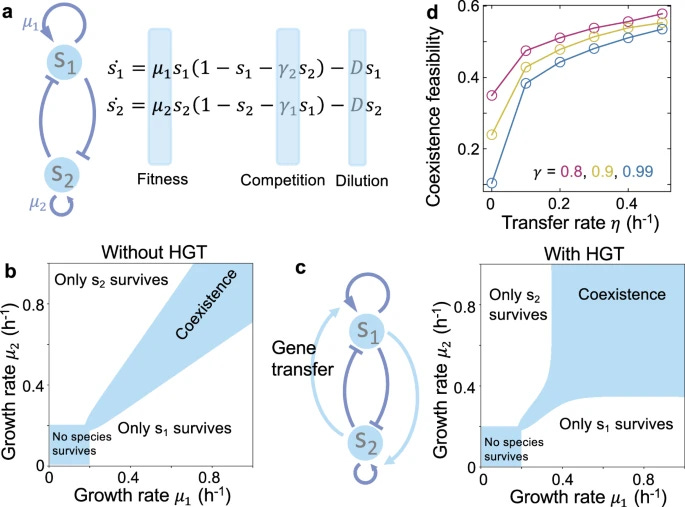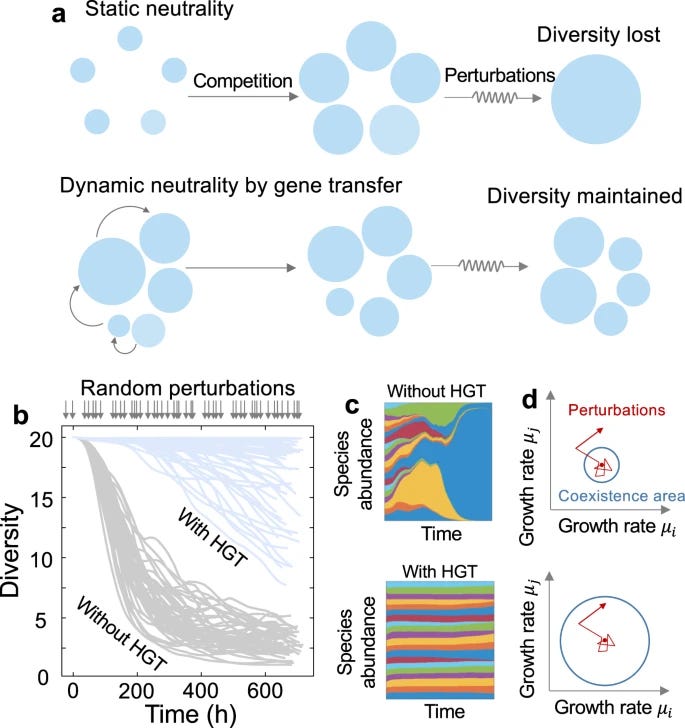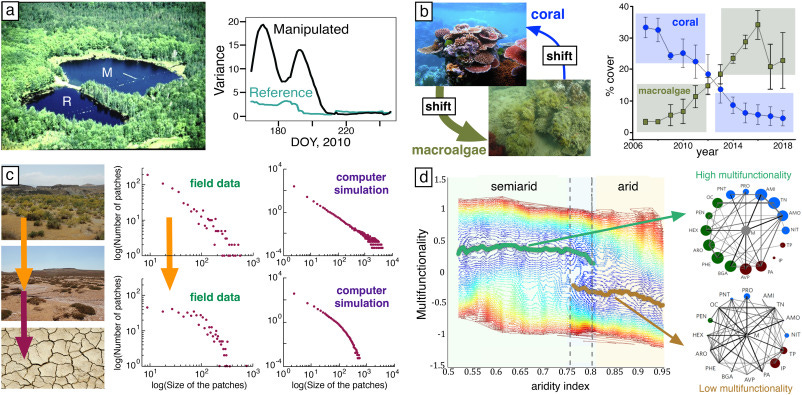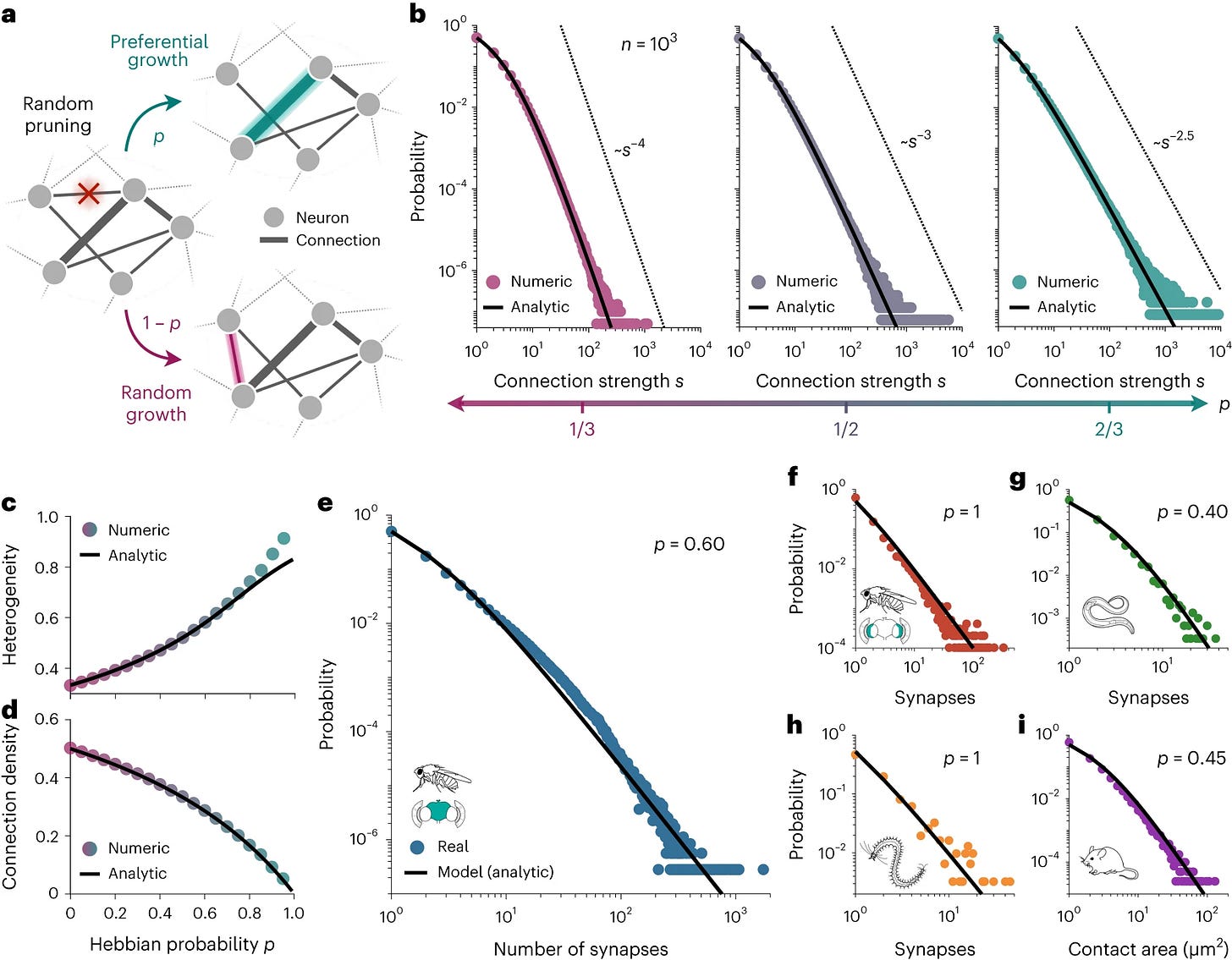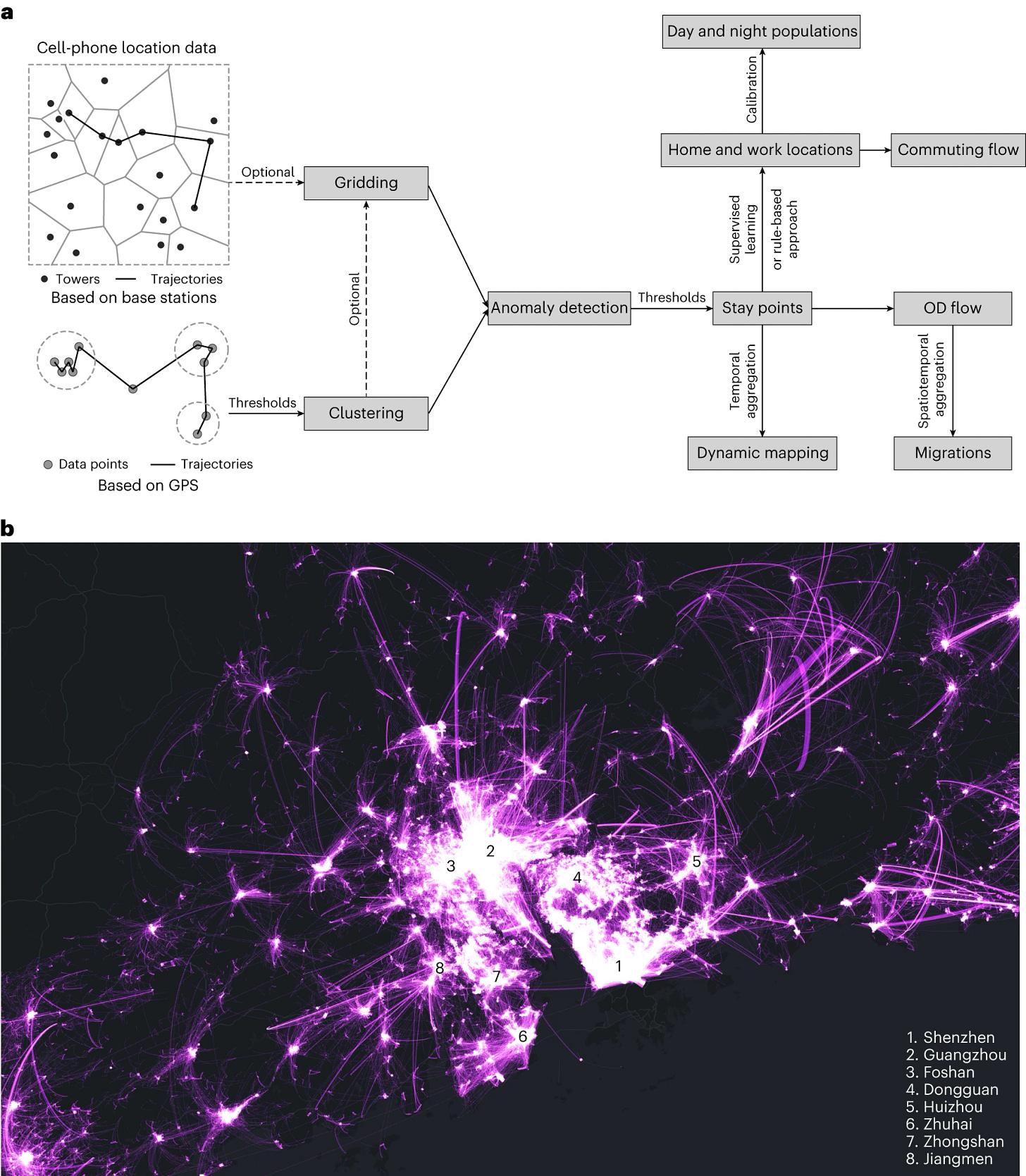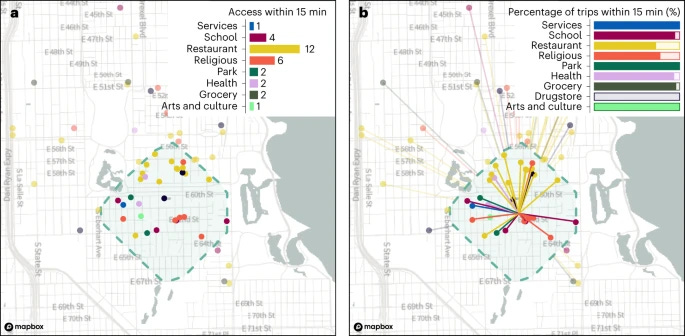If you find Complexity Thoughts interesting, follow us! Click on the Like button, leave a comment, repost on Substack or share this post. It is the only feedback I can have for this free service. The frequency and quality of this newsletter relies on social interactions. Thank you!
Dall-e 3 representation of this issue’s content
Foundations of network science and complex systems
Completely top–down hierarchical structure in quantum mechanics
Can we relate the results of this paper to the long-standing discussion about weak vs strong emergence?
Our analysis supports a top–down structure in quantum mechanics according to which higher-order correlations can always determine lower-order ones, but not vice versa
Can a large system be fully characterized using its subsystems via inductive reasoning? Is it possible to completely reduce the behavior of a complex system to the behavior of its simplest “atoms”? In this paper we answer these questions in the negative for a specific class of systems and measurements. After a general introduction of the topic, we present the main idea with a simple two-particle example, where strong correlations arise between two apparently empty boxes. This leads to surprising effects within atomic and electromagnetic systems. A general construction based on pre- and postselected ensembles is then suggested, wherein the N-body correlation can be genuinely perceived as a global property, as long as one is limited to performing measurements which we term “strictly local.” We conclude that under certain boundary conditions, higher-order correlations within quantum mechanical systems can determine lower-order ones, but not vice versa. Surprisingly, the lower-order correlations provide no information whatsoever regarding the higher-order correlations. This supports a top–down structure in many-body quantum mechanics.
Nonequilibrium Response for Markov Jump Processes: Exact Results and Tight Bounds
Generalizing response theory of open systems far from equilibrium is a central quest of nonequilibrium statistical physics. Using stochastic thermodynamics, we develop an algebraic method to study the static response of nonequilibrium steady state to arbitrary perturbations. This allows us to derive explicit expressions for the response of edge currents as well as traffic to perturbations in kinetic barriers and driving forces. We also show that these responses satisfy very simple bounds. For the response to energy perturbations, we straightforwardly recover results obtained using nontrivial graph-theoretical methods.
Pattern recognition in the nucleation kinetics of non-equilibrium self-assembly
I am not completely sure that brain is “biology’s most sophisticated computer” but I appreciate the research question and the methodology of this interesting paper. It' could be classified also as bio-inspired (or physics-inspired?) computing.
Viewing nucleation as a machine learning model raises the question of whether there is a natural physical implementation of learning
Inspired by biology’s most sophisticated computer, the brain, neural networks constitute a profound reformulation of computational principles1,2,3. Analogous high-dimensional, highly interconnected computational architectures also arise within information-processing molecular systems inside living cells, such as signal transduction cascades and genetic regulatory networks4,5,6,7. Might collective modes analogous to neural computation be found more broadly in other physical and chemical processes, even those that ostensibly play non-information-processing roles? Here we examine nucleation during self-assembly of multicomponent structures, showing that high-dimensional patterns of concentrations can be discriminated and classified in a manner similar to neural network computation. Specifically, we design a set of 917 DNA tiles that can self-assemble in three alternative ways such that competitive nucleation depends sensitively on the extent of colocalization of high-concentration tiles within the three structures. The system was trained in silico to classify a set of 18 grayscale 30 × 30 pixel images into three categories. Experimentally, fluorescence and atomic force microscopy measurements during and after a 150 hour anneal established that all trained images were correctly classified, whereas a test set of image variations probed the robustness of the results. Although slow compared to previous biochemical neural networks, our approach is compact, robust and scalable. Our findings suggest that ubiquitous physical phenomena, such as nucleation, may hold powerful information-processing capabilities when they occur within high-dimensional multicomponent systems.
Evolution
Rarely I have enjoyed to read a paper as I did for this one.
Physical foundations of biological complexity
Living organisms are characterized by a degree of hierarchical complexity that appears to be inaccessible to even the most complex inanimate objects. Routes and patterns of the evolution of complexity are poorly understood. We propose a general conceptual framework for emergence of complexity through competing interactions and frustrated states similar to those that yield patterns in striped glasses and cause self-organized criticality. We show that biological evolution is replete with competing interactions and frustration that, in particular, drive major transitions in evolution. The key distinction between biological and nonbiological systems seems to be the existence of long-term digital memory and phenotype-to-genotype feedback in living matter.
Ecosystems
Horizontal gene transfer is predicted to overcome the diversity limit of competing microbial species
Natural microbial ecosystems harbor substantial diversity of competing species. Explaining such diversity is challenging, because in classic theories it is extremely infeasible for a large community of competing species to stably coexist in homogeneous environments. One important aspect mostly overlooked in these theories, however, is that microbes commonly share genetic materials with their neighbors through horizontal gene transfer (HGT), which enables the dynamic change of species growth rates due to the fitness effects of the mobile genetic elements (MGEs). Here, we establish a framework of species competition by accounting for the dynamic gene flow among competing microbes. Combining theoretical derivation and numerical simulations, we show that in many conditions HGT can surprisingly overcome the biodiversity limit predicted by the classic model and allow the coexistence of many competitors, by enabling dynamic neutrality of competing species. In contrast with the static neutrality proposed by previous theories, the diversity maintained by HGT is highly stable against random perturbations of microbial fitness. Our work highlights the importance of considering gene flow when addressing fundamental ecological questions in the world of microbes and has broad implications for the design and engineering of complex microbial consortia.
HGT promotes the stable maintenance of species diversity in fluctuating environments
Identifying regime shifts, transients and late warning signals for proactive ecosystem management
To overcome the effect of hysteresis after a regime shift, it may be necessary to act simultaneously on the driver parameter and on the population size e.g., by reducing the driver intensity while re-introducing individuals forcing the system to cross the unstable branch, achieving recovery
Ecosystems can suffer abrupt regime shifts driven by tipping points. Even reducing or eliminating stressors that trigger tipping points, ecosystems may not return to their previous states. To avoid the impacts of tipping points conservation policies may need to monitor the indicators of ecosystems’ resilience. We discuss how tipping points properties impact on ecosystems' conservation, management, and restoration. We introduce late warning signals (LWS) and provide preliminary evidence of their existence.
Neuroscience
Heavy-tailed neuronal connectivity arises from Hebbian self-organization
these results demonstrate how two fundamental features of connectomes—heavy–tailed connectivity and clustering—can arise from simple network dynamics, providing a framework for future investigations into the self-organization of neuronal connectivity
The connections in networks of neurons are heavy-tailed, with a small number of neurons connected much more strongly than the vast majority of pairs. However, it remains unclear whether this heavy-tailed connectivity emerges from simple underlying mechanisms. Here we propose a minimal model of synaptic self-organization: connections are pruned at random, and the synaptic strength rearranges under a mixture of preferential and random dynamics. Under these generic rules, networks evolve to produce distributions of connectivity strength that are asymptotically scale-free, with a power-law exponent that depends only on the probability of preferential (rather than random) growth. Extending our model to include neuronal activity and Hebbian plasticity, we find that clustering in the network also emerges naturally. We confirm these predictions in the connectomes of several animals, suggesting that heavy-tailed and clustered connectivity may arise from general principles of network self-organization rather than mechanisms specific to individual species or systems.
Urban systems
Defining a city — delineating urban areas using cell-phone data
The United Nations Human Settlements Programme (UN-Habitat) published a report under the premise that, to achieve the Sustainable Development Goals, we need to propose solutions to key urban challenges, and to do so, we need a clear and globally agreed definition of what a city is
What is a city? Researchers use different criteria and datasets to define it—from population density to traffic flows. We argue there is one dataset that could serve as a proxy of the temporal and spatial connections that make cities what they are: geolocated data from the world’s more than 7 billion cell-phone users. Cell-phone data are a proxy of people’s presence in a given area and of their movement between areas. Combined with computational methods, these data can support city delineations that are dynamic, responding to multiple statistical and administrative requirements, and tailored to different research needs, thus accelerating ongoing work in urban science.
The 15-minute city quantified using human mobility data
From theory to practice!
to gain both environmental and social benefits from the 15-minute approach, policies promoting local living in US cities should be paired with dedicated efforts to create opportunities for social mixing, such as subsidized housing or mandating public spaces catering to diverse groups
Amid rising congestion and transport emissions, policymakers are embracing the ‘15-minute city’ model, which envisions neighbourhoods where basic needs can be met within a short walk from home. Prior research has primarily examined amenity access without exploring its relationship to behaviour. We introduce a measure of local trip behaviour using GPS data from 40 million US mobile devices, defining ‘15-minute usage’ as the proportion of consumption-related trips made within a 15-minute walk from home. Our findings show that the median resident makes only 14% of daily consumption trips locally. Differences in access to local amenities can explain 84% and 74% of the variation in 15-minute usage across and within urban areas, respectively. Historical data from New York zoning policies suggest a causal relationship between local access and 15-minute usage. However, we find a trade-off: increased local usage correlates with higher experienced segregation for low-income residents, signalling potential socio-economic challenges in achieving local living.
Urban dynamics through the lens of human mobility
The near real-time sensing of urban dynamics becomes more important in large-scale emergency events, like pandemics or natural disasters, to better plan for the reopening or reconstruction of cities
The urban spatial structure represents the distribution of public and private spaces in cities and how people move within them. Although it usually evolves slowly, it can change quickly during large-scale emergency events, as well as due to urban renewal in rapidly developing countries. Here we present an approach to delineate such urban dynamics in quasi-real time through a human mobility metric, the mobility centrality index ΔKS. As a case study, we tracked the urban dynamics of eleven Spanish cities during the COVID-19 pandemic. The results revealed that their structures became more monocentric during the lockdown in the first wave, but kept their regular spatial structures during the second wave. To provide a more comprehensive understanding of mobility from home, we also introduce a dimensionless metric, KSHBT, which measures the extent of home-based travel and provides statistical insights into the transmission of COVID-19. By utilizing individual mobility data, our metrics enable the detection of changes in the urban spatial structure.





